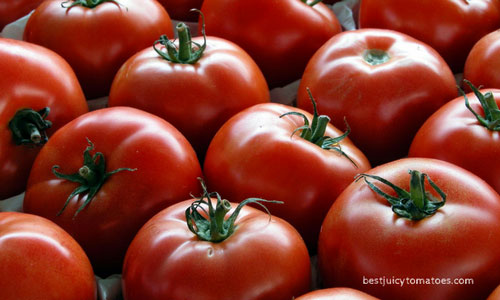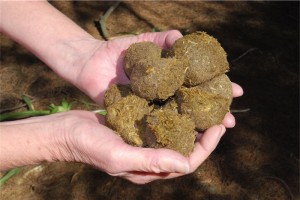The Best Tomato Fertiliser
14 Sep

Does your tomato fertiliser provide the nutrients your plant needs to grow the very best, juicy tomatoes?
If you’re not sure, we’ll walk you through soil nutrition and fertiliser step by step. You won’t believe what a difference it will make to the health and yield of your tomato plant.
Understanding Soil Nutrition
The nutrition of your soil is essential for the production of juicy, tasty tomatoes. In fact, preparing the soil properly is the first thing to do before planting tomatoes.
You can test the nutrients and pH level of your soil by preparing a soil sample and sending it to be tested at a local cooperative extension office. For more information on soil sample testing, have a read of our blog post Tomato Plant Nutrition: What Nutrients Do Tomato Plants Need?
There are a number of ways that you can improve your soil through fertilisation. These include adding one or more of the following:
- Chemical fertilisers that combine specific elements designed to improve the soil and correct deficiencies.
- Compost and manure.
- Organic fertilisers that contain manure, seaweed, ground bone, linseed, cottonseed and various other materials, all of which contain essential nutrients.
Tomato Fertiliser: Chemical Fertiliser
Compound chemical fertiliser is usually labelled by the amount of Nitrogen (N), Phosphorous (P), and Potassium (K) they contain. In some countries, this is described as a percentage, for example 5-10-10, 5-20-20, or 8-16-16, all of which are great for fertilising soil before you plant tomatoes.
Sometimes, the quantities are described as a ratio. As an example, what might be called 5:12:5 becomes 2:3:2 (22), the number in brackets indicating the total percentage of nutrient units in the fertiliser. This format, 2:3:2, which is also often added to the soil where tomatoes will be grown, contains 6.28% nitrogen and potassium and 9.44% phosphorous.
Specifically nitrogenous, phosphatic and potassic chemical fertilisers are also widely available and may be used as “side dressing” once the plants are established. Usually a little nitrogenous fertiliser (about 8 g per m²) and a bit more potassic fertiliser (about 20 g per m²) should be sprinkled around the tomato plants once they start to flower. Organic potassium or nitrogen products may be used instead.
The Impact of Chemical Fertilisers
The indiscriminate use of chemical, inorganic fertilisers over the past century has caused considerable damage to soil worldwide. However it was only well into the 20th century that some people began to realise that the best way to revitalise poor soil was not to pump chemicals into it, but rather to practice crop rotation, use manure, undertake companion planting and generally follow what is now known as biodynamic gardening.
Tomato Fertiliser: Manure and Compost
While it is often said that manure is not really a fertiliser, gardeners have been using manure as fertiliser for centuries.
In Britain, the Victorians (who were great gardeners) turned to chemical fertilisers, believing that “science” was the cure-all for everything. Even though research at the beginning of the 20th century showed that chemicals were not a substitute for “dung manuring”, chemical fertilization continued to flourish. This was fuelled by the fact that horses were also replaced by petrol-driven vehicles that produced a different type of muck!
There is absolutely no doubt that the best way to make the soil for your tomato plants “fertile” is to add large amounts of organic matter in the form of compost and manure. Organic matter is vital, not only because it prevents nutrients from leaching out of the soil, but also because as the material decomposes, it releases its own valuable nutrients into the ground.
Various types of composts are available from nurseries and garden stores, including rich mushroom compost. Mushroom compost is a favourite, but it is really easy to make your own by recycling household vegetable and garden waste. Learn the ways of DIY composting in our blog post, How to Make Compost.
Adding Manure to Your Soil
If you have access to manure, dig it into the compost you have bought or made. And, once you have dug everything into your soil, measure it to see if additional elements need to be added. Manure will generally add nitrogen; bone meal, which you can buy bagged, contains lots of phosphorous; and both seaweed and wood ash will add potassium to the soil.
Adding Horse Manure
The top choice here is horse manure, which many stable yards throw out. If combined with straw and/or wood shavings used for bedding, you will have the added value of mulch.
Unless it contains a lot of urine, horse manure can be dug directly into the soil. However, if you have the space and time, pile it and let it ferment for a period of months (the longer the better), and you will end up with lovely black, rich compost.
Adding Poultry Droppings
Poultry droppings are hot and smelly and should be used with care as they can burn plants. It should, in any case, be left in a heap, covered to prevent nitrogen from leaching out and to minimise flies.
Adding Cow Dung
Cow dung should also be allowed to stand for a while. It is considerably harder than other types and will need to be broken up before being mixed into the soil.
Learn More About Tomato Fertiliser
There’s so much to learn about tomato fertiliser, soil nutrition, and using compost and manure. If you’re looking to perfect your tomato growing method, pick up a copy of our much-loved book, How to Grow Juicy Tasty Tomatoes.












